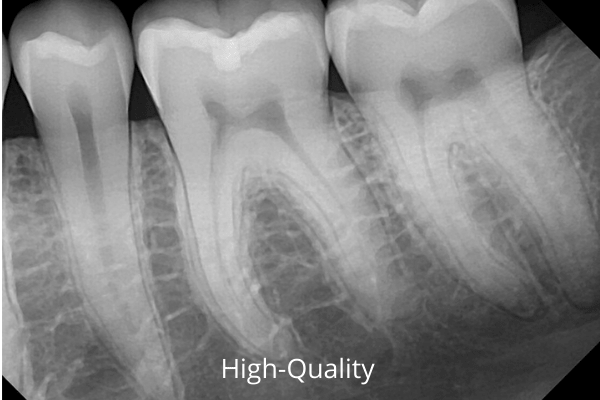
Portable X-ray machines are becoming more common in dental, healthcare, and veterinary offices worldwide as more cost-effective and space-saving replacements to rigid, wall-mounted X-ray machines.
Portable X-ray machines, which are built to be used by gripping the mobile X-ray device with outstretched arms and then activating it at arm's length, are questioning two of the primary standards of radiation protection for specialists: distance and security.
To prevent damage from backscatter and radiation emission, X-ray technicians are universally advised to keep a safe distance beyond the "controlled zone" or to stay sheltered behind a secure lead wall while running X-ray devices.
While portable X-ray vendors usually have a lead shield inside the device and/or a lead-embedded defensive shielding at the end of the X-ray tube's head, inappropriate usage will expose operators to radiation.
With all of the technical advances in optical radiography, it's no surprise that more businesses and medical professionals are investing in digital and wearable X-ray technologies.
Manufacturers of X-ray machines would be wise to capitalize on this trend at the moment. Both providers and patients profit from the use of portable X-ray machines.
These devices have transformed medical imaging.

The Overall Quality of Patient Care
The versatility of digital imaging technologies has contributed to the elimination of X-ray exam retakes and the provision of timely and reliable material.
Patients and technicians should not have to think about poor image quality when waiting for the film to be processed (by an automated printer using chemicals and a darkroom close to what is used to produce standard film photographs).
With portable X-ray devices, radiologists and patients can get precise and quick reports without having to bring patients to clinical departments to do the test.
X-ray manufacturers recognize that they have a forum and a duty to promote digital and wearable medical imaging technologies.
As a result, today's surgical technology provides exceptional value and comfort to both patients and medical practitioners.
Notably, portable X-ray systems are regarded as outstanding medical devices that allow doctors, veterinary, and other healthcare experts in the military, sports teams, and others who deal with unmoving patients to minimize time and expense while delivering quality care to patients.
These advantages lead to improved health safety and the prospect of saving millions of lives.
Below are some of the essential advantages of using portable X-ray devices.
Top Five Advantages of Portable X-Ray Machines
1. Portability and Mobility
One significant advantage of having a compact X-ray is the ability to stop transports and additional patient motions.
In certain cases, hospitalizations or visits to the radiology unit for chest, muscular, and abdomen X-ray assessments can do more damage than good to patients, including those with severe medical conditions.
These machines aim to remove unwanted transports and modifications in the patient's body posture during X-ray tests.
Most portable X-ray machines come with a wheeled stand, while others are motorized, allowing technicians to drive the machine easily and without the need for an external plug-in.
Many of the modules fold up into smaller sizes, and some weigh less than a hundred pounds, making them far easier to carry in trucks.
Some portable X-ray devices often enable technologists to photograph patients while standing, seated, or lying down. This increases versatility and improves patient safety.
2. Speed
Radiograph tests performed with handheld imaging instruments have a slower response speed and no long wait times.
Portable X-ray equipment can be used in just Twenty minutes. Furthermore, the reports can be activated in real-time and sent immediately to the patient's physician, which is generally completed within an hour, allowing for prompt identification and care of the patient.
3. Security
Radiation exposure remains one of the main health risks for both patients and staff when using conventional medical imaging technology; however, findings indicate that using mobile radiology instruments reduces radiation exposure significantly.
They are shielded from radiation emitted by the mask placed on the front of the portable X-ray machine.
4. Economical Effectiveness
Patient transportation is expensive. Portable X-ray systems can have socioeconomic benefits by minimizing the use of ambulance and cab transportation and staff pull-out to follow patients to and from the clinic. Mobile X-rays contribute to lower overall costs.
5. Image Quality
Portable optical X-ray equipment is outfitted with cutting-edge technology. This enables technologists to obtain high-quality photographs in a brief period.
The scanning device's optical scanner does not use film and instead consists of phosphor trays and cassettes that can be easily deleted during use.

With the workstation attached to the portable device, technologists may also improve digital clinical images captured in the region.
Bio
QEHC uses automated X-ray imaging to provide reliable and prompt examinations, ensuring that our patients get the best possible treatment.
We can provide quicker delivery, shorter wait times, and high-quality digital files.
The QEHC's team of top radiologists and technologists specializes in diagnostic imaging techniques including X-rays, and ultrasound, ensuring that scans are expertly performed and analyzed by the highest expectations.
Add new comment